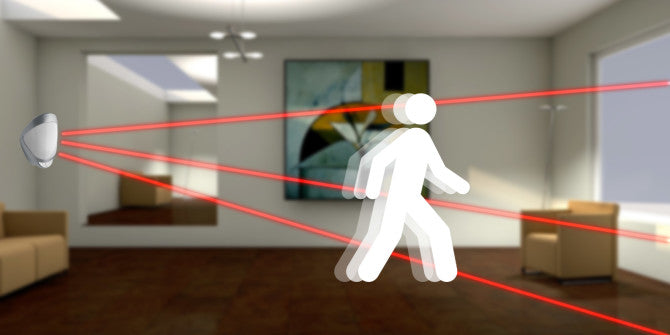How to Configure Alarm Notification
Introduction
The alarm notification function makes Hikvision a professional and powerful private security guard for 7X24 surveillance. Once there are events occurring, notification will be instantly pushed to your mobile device, and then you can either play back what just happened or live view what is happening. This function provides a more effective way to secure your property and your family.
Configuration
With our free mobile client software iVMS-4500 installed on your mobile device, the alarms detected by your network camera, DVR, or other devices can be sent to you automatically by performing the following simple configuration.
Note: Here we take the motion detection configuration of the DVR and network camera for example. For detailed configuration about the motion detection and other alarm types, please refer to the user manual of the device.
In the Device
For DVR (Configuring via Local Menu)
Note: To ensure sending the alarm information successfully, you need to configure the correct gateway and DNS server address for your device on the Network Settings interface (Menu > Configuration > Network).
Steps:
1. Enter the Motion Detection interface and choose a camera you want to set motion detection.
Menu> Camera> Motion
2. Set detection area and sensitivity.
Check the checkbox to enable motion detection, use the mouse to draw the detection area(s), and drag the sensitivity bar to set sensitivity.
3. Click to configure the motion detection settings. Select the Arming Schedule tab and set the arming schedule of the camera.
4. Click the Linkage Action tab to set alarm response actions of motion detection. Check the checkbox of Notify Surveillance Center to enable sending the alarm information to the mobile device that installs iVMS-4500 software.
5. Click Apply to save the settings. Click OK to complete the motion detection settings of the camera.
For Network Camera (Configuring via Web Browser)
Note: To ensure sending the alarm information successfully, you need to configure the correct gateway and DNS server address for your device on the Network Settings interface (Configuration > Basic Configuration > Network).
Steps:
1. Enter the motion detection settings interface.
Configuration > Advanced Configuration> Events > Motion Detection
2. Set detection area and sensitivity.
Check the checkbox of Enable Motion Detection. Click Draw Area draw the motion detection area(s) and drag the sensitivity bar to set sensitivity.
3. Set the arming schedule for motion detection.
4. Set the alarm response actions for motion detection.
Check the checkbox of Notify Surveillance Center to enable sending the alarm information to the mobile device that installs iVMS-4500 software.
5. Click Save to confirm the settings.
In the iVMS-4500
Note: To enable the alarm notification, the notification for iVMS-4500 should be turned on on your mobile device.
Adding the Device
Steps:
1. Click and select to enter the Device Management interface.
2. Click to add a new device.
Alias: Edit a name for the device as desired.
Register Mode: Select the register mode to HiDDNS, IP/Domain, or IP Server.
HiDDNS: When the device is registered on the HiDDNS server, you need to enter the HiDDNS server address and the device domain name registered on the server. You can also scan the serial No. On the label of the device click if your device has been registered on the HiDDNS server via serial No.
Note: For adding the device via HiDDNS and accessing the device over the internet, you should configure the port mapping of the device on your router. By default, you need to map 3 ports: 80, 8000, and 554.
IP/Domain: You can access the device through a fixed IP address or domain name. You need to edit the IP address or domain address and the port of the device.
IP Server: You can access the device through the IP Server. You need to set the IP Server address, and device identifier which is the device name or device serial No.
User Name: Input the user name of the added device.
Password: Input the password of the added device.
Camera No.: The number of the camera(s) under the device can be obtained after the device is successfully added.
3. Click to confirm the settings.
Enabling Alarm Notification
Steps:
1. Click and select to enter the Alarm Management interface.
2. Click Alarm Push Notification to enter the Alarm Push Notification interface.
3. Select a device and set the as to enable the alarm notification of the device. In this way, the alarm information can be pushed to your mobile device for the first time.
4. If the software is not opened or is running in the background, the newly pushed notification appears briefly at the top of the screen. You can ignore the notification or click it to address it right away. Otherwise, the notification displays the alarm information directly.
5. In the alarm information interface, select a piece of alarm information and click. You can select Live View or Remote Playback to view the live view or record file of the camera.

